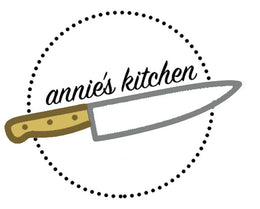Using a Honing Steel to Keep your Knife Edge in Shape
Keeping your knife sharp:
Your knife arrived to you sharp, I would like to give you some tips on keeping it sharp. I sharpen our knives in the shop about once a month. Shop sharpening starts with a low speed water wheel and then I progress with three progressive grit Arkansas oilstones and finishing with two very fine Japanese waterstones. I don’t expect you have these in your kitchen, so here is how you extend your knife. The most important step, before you use your knife each time is to hone it on a steel. The information below I took from Chad Ward’s web site:
“That metal rod thingie that came with your knife set is called a steel or honing rod. Unless you purchased your steel separately, you probably ended up with a medium grooved steel. That’s okay, but a finely grooved steel is better. A completely smooth steel or high grit ceramic honing rod is even better still. Whatever kind of steel you have, using it regularly is the best way to keep your knives ticking along at peak performance. The simple act of swiping your edge down a steel once a week or so will keep your edges sharp for up to a year before they need sharpening again. Whenever you use your knife, especially softer kitchen knives, the edge can roll over a little. It is still sharp, it just isn’t pointing straight down any more. Using the steel or honing rod realigns the edge of the knife, forcing the rolled spots back into line and making the edge useable again.
Steeling Your Knife
“The edge is still sharp, it just isn’t pointing straight down any more
Be aware that the medium grooved steels that come with knife sets must be used with a very light touch. A grooved steel acts as a file when used with a heavy hand, knocking microscopic chips out of your edge.
The standard image we all have of steeling a knife involves a chef with his knife in one hand and steel in the other, blade flashing and ringing as the chef clangs it back and forth. If you’re particularly adept at this type of swordsmanship, have at it. It impresses the tourists. A more effective method is to stand the steel straight up with the tip resting on a folded towel to keep it from slipping. Why? Geometry.
Place the knife edge against the steel with the blade perpendicular to the steel and you have a 90 degree angle between the edge and the steel, right? Rotate your wrist so that you reduce the angle by half to form a 45 degree angle. Reduce that by half for 22.5 degrees, and you are exactly where you need to be to steel your knife. Most factory edges are somewhere between 20 and 25 degrees per side. You generally want to steel your knife at the same angle or at a very slightly steeper angle than the edge bevel itself.

You can also use the Paper Airplane Trick to make a guide to prop against your steel so you know you are hitting the proper angle. Take a piece of paper and fold one corner over to the opposite side. Line up the edges and smooth down the crease, very much like making a paper airplane. You’ve just created a 45 degree angle. Fold the creased side over to the far edge again and you’ve created a 22.5 degree angle. Sound familiar? Twenty-two and a half degrees is pretty close to 20 degrees, at least as close as you can generally hold a specific angle by hand. This folded piece of paper can serve as a guide for steeling your knife, setting an angle on a sharpening stone or just checking that you’re keeping your angle steady as you sharpen. The paper edge guide is especially handy when you are learning to steel your knives properly. It helps build the right angle into muscle memory so you can do it without the guide when you have some practice.
When you’re steeling, lock your wrist and stroke the knife from heel to tip by unhinging at the shoulder – it’s your pivot point. Slowly swipe the knife down the steel by dropping your forearm. The key is to maintain a consistent angle all the way through the stroke. By locking your wrist and elbow, you will keep your angle stable from top to bottom. Follow all the way through the tip but don’t let the tip slide off the steel or you’ll risk rounding it over time. You don’t have to press very hard to realign the edge. Steeling requires barely more pressure than the weight of the knife itself. Alternate from side to side, keeping the same alignment and angle on both sides. It really only takes five or six strokes per side to keep your knife ready for more work.”
I have a couple of comments. First, I like to use the steel the first time I use a knife that day. Next, I prefer an old fashioned steel hone over a ceramic or diamond hone, just my personal preference. My favorite is from a German company, Friedr. Dick. There is an online company out of San Diego, Knife Merchant and they carry this line. Second, the Japanese style knives I make have a 16 degree bevel instead of the 22 degree of the European style knives. My two straight paring, the Utility and the large Chef’s knives all have a 22 degree edge. The light weight knives, the curved paring, the mid-Chef, the Chef (or Sushi) and Santoku knives all have a 16 degree edge. Call me if you’re not sure.
If you would like me to make a steel for you with the same handle wood as your knives, I would be happy to do this.
Peter Milner
